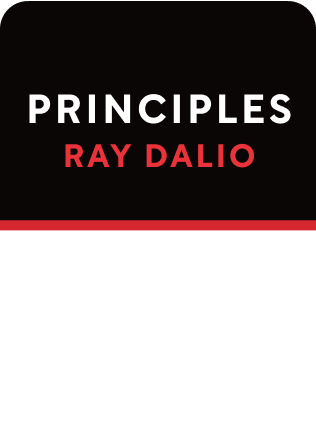

This article is an excerpt from the Shortform summary of "Principles: Life and Work" by Ray Dalio. Shortform has the world's best summaries of books you should be reading.
Like this article? Sign up for a free trial here .
Do you want to know how to train employees effectively? How does training employees well lead to better long term results?
Learning how to train employees effectively is an important part of being a manager. Even if you hire the best people, they won’t be effective without being properly trained on how to do the job.
Keep reading to find out how to train employees, and why it matters for your company.
How to Train Employees, Evaluate, and Sort
Managing people is a simple series of steps:
- Define the goal.
- Give the goal to people who can achieve it. Preferably, you don’t need to tell them what to do to achieve it (this is micromanaging).
- Hold the responsible people accountable for reaching the goal.
- If they fail, train them and give them time.
- If they can’t do the job after this, switch them to a different job that matches their strengths, or get rid of them.
The ultimate responsible party is the person who bears the consequences of failure. If you’re the business owner, that is you. For example, it’s your responsibility to pick the right doctor, since you bear the responsibility if she does a bad job, not the doctor’s.
Here are Dalio’s principles on how to train staff, evaluate how people are doing, and how to decide what to do with people based on how they’re doing. Learning how to train employees effectively is an essential part of the management process.
Training
Generally, it takes 6-12 months to get to know an employee’s strengths and weaknesses and their preferences for work. It shouldn’t take longer than this to know whether someone is a good fit for their job. If you know how to train new employees, this can be a fairly smooth process.
This should be an iterative process. As you learn more about the trainee, she should get new assignments tailored to her strengths and weaknesses and her preferences.
When evaluating the trainee, it’s best to have at least two believable trainers triangulate their view on the trainee. This is one method for how to train staff.
Resist micromanaging the trainee, or any employee in general. Don’t tell people what they should do—if you feel this is needed, it probably means the person being micromanaged lacks ability. Train and test them, then explore how they make decisions.
Delivering Feedback
Feedback is a constant process, done throughout training and beyond. It’s a key part of radical honesty, but feedback can often be painful. Part of knowing how to train new employees is giving feedback and preparing them for feedback.
Start from specific data points, look for patterns, then build up to a larger picture.
When giving feedback, ask people to focus on whether the feedback is true, rather than the implications of that feedback (such as whether they’ll be demoted). Ask, “does this feedback sound accurate to you?” Use this to learn about them and discover root causes together.
Reflect what is succeeding and not in proportion to the actual situation when giving feedback, and learning how to train new employees.
- If things are going poorly, don’t feel obligated to balance compliments and criticisms for the sake of complimenting.
- Dalio’s tendency is to avoid celebrating how great they are and instead to focus on where they need to improve, since that’s how Bridgewater got to be great.
- Compliments are nice to receive, but they don’t help people stretch and grow.
- If communicating a weakness or mistake, put it into context of the person’s total evaluation. A glancing comment from a superior could make someone afraid of being fired.
- At Bridgewater, Dalio saw a high-performing trainee talk for a long time about non-work topics, and he gave stern feedback to stay on task. Later Dalio found the trainee thought he was going to be fired.
Feedback can hurt. Remind the person receiving feedback that accuracy and kindness are the same thing. Feedback is a gift that gives the recipient the power to be successful.
- A management relationship should feel like skiing together—you do things by trial and error, and you have good back-and-forths. Ideally your reports don’t feel like you’re their enemy, and rather that you’re trying to help them.
- Remind them about how pain is a signal for reflection and finding the truth, and that the truth is more important for meeting their goals than satisfying their ego.
- Let them see their failures so clearly they are motivated to change them.
Evaluation
Make a clear “contract” on what the expectation of work is. Without this, you can’t hold people accountable for it not being fulfilled. Knowing how to train employees on how they will be evaluated will help you all in the long run.
- Review goals, tasks, and responsibilities at least once a quarter.
- Meet more frequently to get in sync—perhaps at a ratio of 1:10 to 1:20 for the time spent with the person over the time the person spends working.
- If someone performs poorly, make sure it’s not because the expectations weren’t clear to them.
Make your metrics clear-cut and impartial. Define the most critical metrics, and have discipline in checking them regularly.
- Even better, tie the metrics formulaically to predetermined consequences (like bonuses).
Take data points over time to notice patterns in people. Built from the specific data—their metrics, performance, input from others—up to an overall impression.
- Bridgewater uses the Dot Collector to compile thousands of data points about people over time.
Evaluate employees with the same rigor as you do job candidates. Don’t be easy on people just because they’re not outsiders.
Hold people to the same standards, and provide feedback consistent with the standards.
- Don’t hold the stronger performer to a higher standard.
- Don’t spread the blame. The person who is most in the wrong needs to get the strongest feedback. Otherwise, they might believe they didn’t cause the problem.
Assign credit precisely. Specific people are responsible for specific results.
- Everyone thinks what they’re doing is more important than it really is. People tend to overestimate their own contributions. If you survey people on what their % contribution to the organization is, you’ll end up with well over 100% in total (Bridgewater’s was 300%).
Dalio likes “forced rankings,” in which people rank their co-workers from best to worst. This prevents an assessment of everyone as above average, and it helps identify low performers.
Don’t be overconfident about your assessments. Use other people to develop your assessment.
- Triangulate your impressions of people with other believable people.
- Get in sync with the person you’re giving feedback to. Do they agree with your feedback?
Judge people based on both their reasoning and their outcomes. Often, the outcomes are out of their control, and if the person had sound reasoning, they should not be punished for a poor outcome.
- To use a golf analogy, “Pay more attention to the swing than the shot.”
Periodic performance reviews should contain few surprises—feedback should have been delivered continuously so that people know where they stand.
Check behavior, and deter bad behavior. More people than you think will cheat if given the opportunity.
- Choose people to audit or investigate. Explain that you’re doing this and why to the people under audit, so there are no surprises.
- They shouldn’t take this personally as a lack of trust, just as bank tellers shouldn’t complain when banks count the money in drawers.
- Auditors’ procedures should not be known to those being audited.
- Find ways to audit the auditors to avoid simple rubber stamping.
- If you find a rule violation, use “public hangings” to deter future bad behavior.
Decision Points
Based on people’s performance, you will need to figure out what to do with them.
For People Who Aren’t Working
Some people are just not suited for the jobs they were hired for. Keeping them in those jobs is toxic to the entire system. It compromises the meritocracy and lowers morale. It also holds back the person’s personal evolution, because it prevents them from discovering another way they can contribute, in your organization or another.
Diagnose the failure to get at the root cause. It can be due to design problems in the machine (such as giving someone too many responsibilities), lack of ability, or lack of training.
- Don’t confuse lack of skills for lack of abilities. Remember the abilities are fundamental ways of thinking and behaving, while skills are learned tools. If someone lacks ability, they’re unlikely to gain that ability, and you will waste time trying to train them.
- Don’t count on people to save themselves or design their own best solution.
If the problem is a lack of values or abilities, don’t rehabilitate them. Rehabilitation involves changing people’s values or abilities. Again, these don’t change much. It’s best to assume their values and abilities are what they are, unless there is good evidence to the contrary.
Figure out whether the person is a better fit for another job in the organization. But be careful—understand why they failed, and why this won’t happen again in the new job. This is difficult, but is an important part of knowing how to train staff.
Add guard-rails to a person when needed. Guardrails are structures that help people stay on course; a good guardrail can be a team member whose strengths compensate for the person’s weaknesses. But caution against using guardrails to help failing people reach the bar; it may be better to focus on making good people better.
If the person is failing in a role they were promoted to, beware of letting people step back into their previous role.
- This prevents people who can advance from taking the role, and people who can advance are better than those who can’t.
- Emotionally, the person may resent being demoted to a job they probably can’t advance beyond. It may be better for them to start anew elsewhere.
It’s hard to fire people you like and care about, but it’s necessary for the good of the organization that you do this, and learn how to train employees better the next time around.
For Great People
Great people with great values and capabilities are rare. Think about how to keep great people. Encourage them to speak up about how things are going.
Learning how to train employees is an important part of being a manager. Make sure you develop these key skills.

———End of Preview———
Like what you just read? Read the rest of the world's best summary of Ray Dalio's "Principles: Life and Work" at Shortform .
Here's what you'll find in our full Principles: Life and Work summary :
- How Ray Dalio lost it all on bad bets, then rebounded to build the world's largest hedge fund
- The 5-step process to getting anything you want out of life
- Why getting the best results means being relentlessly honest with everyone you work with






